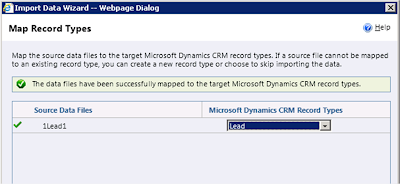On viewing the error message further I noticed the following
16:35:53| Info|
Could not remove registry subkey
HKEY_CURRENT_USER\SOFTWARE\Microsoft\MSCRMClient\AllowList. Cannot delete a subkey
tree because the subkey does not exist.
16:35:53| Info|
Executing Uninstall action:
Microsoft.Crm.Config.Client.DeleteUserApplicationFilesAction
16:35:53| Info|
Executing Uninstall action: Microsoft.Crm.Config.Client.DeactivateAddin
16:35:53|Verbose| Method exit:
Microsoft.Crm.Config.Client.ClientConfig.Reset| System.Collections.Hashtable
16:35:53|Verbose| Method entry:
Microsoft.Crm.Config.Client.ClientConfig.SetConfigurationControlRegistryValues
16:35:53|Verbose| Method exit: Microsoft.Crm.Config.Client.ClientConfig.SetConfigurationControlRegistryValues
16:35:53|Verbose| Method exit:
Microsoft.Crm.Config.Client.ClientConfig.ConfigurationExceptionHandler
16:35:53|Verbose| Method exit:
Microsoft.Crm.Config.Client.ClientConfig.Install| System.Collections.Hashtable
16:35:53| Error|
Configuration exception.System.Exception: Action
Microsoft.Crm.Config.Client.InstallPstAction failed. --->
System.Runtime.InteropServices.COMException (0x8004010F):
LaunchOutlookInstallerProcess failed.
at System.Runtime.InteropServices.Marshal.ThrowExceptionForHRInternal(Int32
errorCode, IntPtr errorInfo)
at
Microsoft.Crm.Config.Client.InstallPstAction.Do(IDictionary parameters)
at
Microsoft.Crm.Setup.Common.Action.ExecuteAction(Action action, IDictionary
parameters, Boolean undo)
--- End of inner
exception stack trace ---
at
Microsoft.Crm.Setup.Common.Action.ExecuteAction(Action action, IDictionary
parameters, Boolean undo)
at
Microsoft.Crm.Setup.Common.Installer.Install(IDictionary stateSaver)
at
Microsoft.Crm.Setup.Common.ComposedInstaller.InternalInstall(IDictionary
stateSaver)
at
Microsoft.Crm.Setup.Common.ComposedInstaller.Install(IDictionary stateSaver)
at
Microsoft.Crm.Config.Client.ClientConfig.Install(IDictionary data)
at Microsoft.Crm.Config.Client.ClientConfig.Run()
16:35:53|Verbose| Configuration Failed
16:35:53| Info|
We were unable to successfully configure Microsoft Dynamics CRM for Outlook:
Action Microsoft.Crm.Config.Client.InstallPstAction
failed.
LaunchOutlookInstallerProcess failed.
A quick search of the trusty Dynamics CRM 4.0 knowledge base
gave me both the problem and the solution - http://support.microsoft.com/kb/2496442
The machine I was trying to configure CRM on once had a
version of Dynamics CRM 2011. The uninstallation
process had left the CRMForOutlookInstaller.exe file in the C:\Program
Files\Microsoft Dynamics CRM\Client\ConfigWizard directory.
The cleanest method to resolve this issue was as follows
1) Uninstall Dynamics CRM 4.0
2) Delete the Microsoft Dynamics CRM folder from C:\Program
Files\
3) Reinstall Dynamics CRM 2011
.png)











































